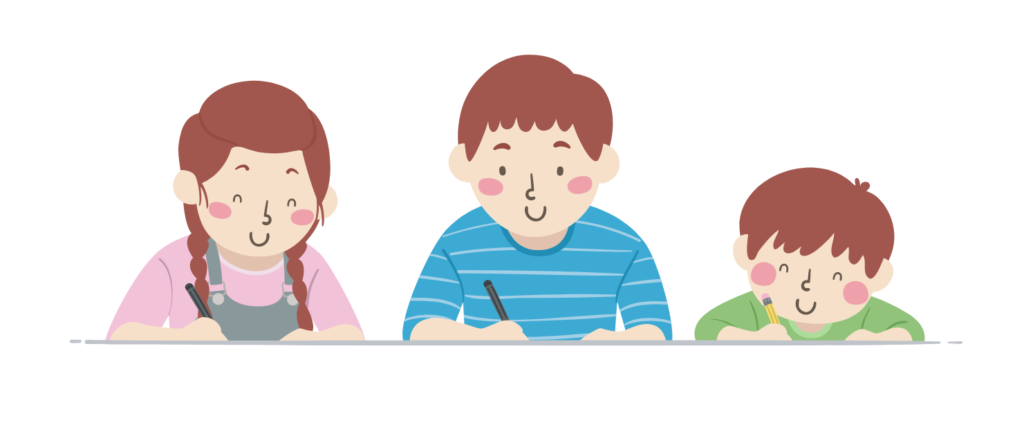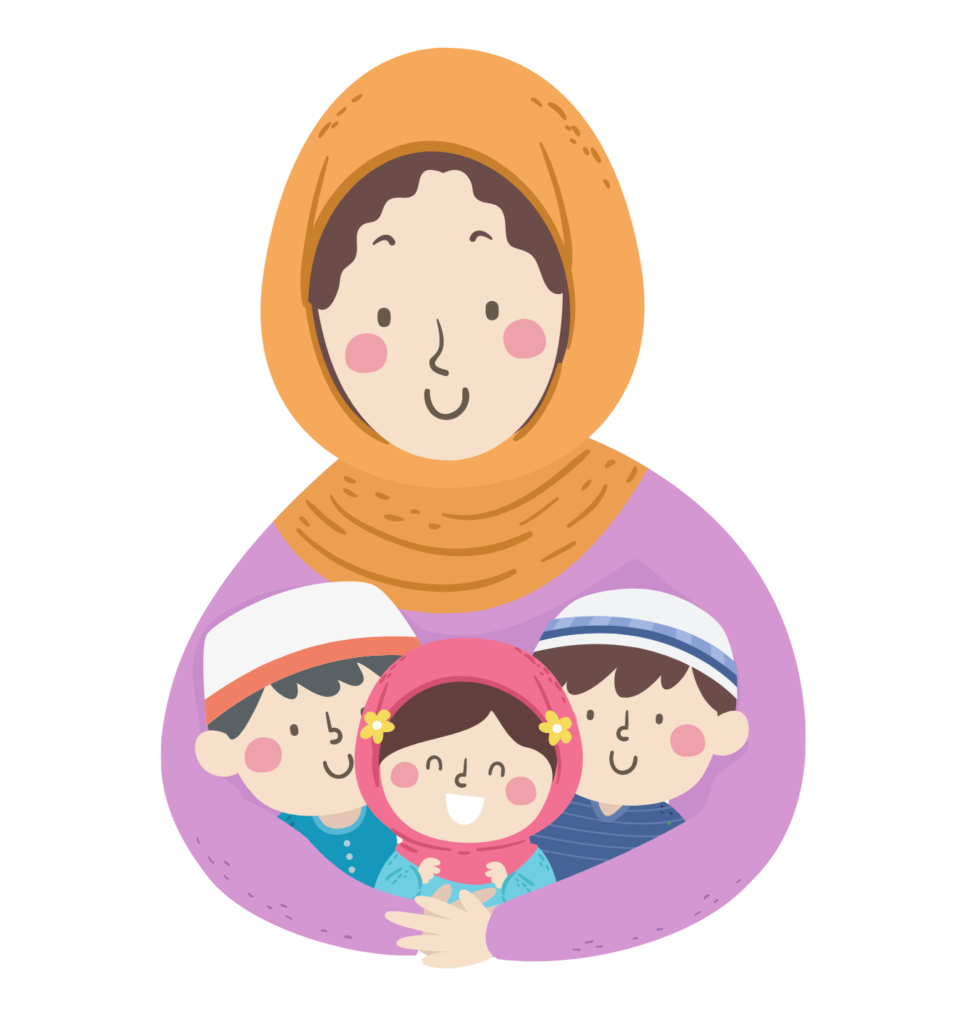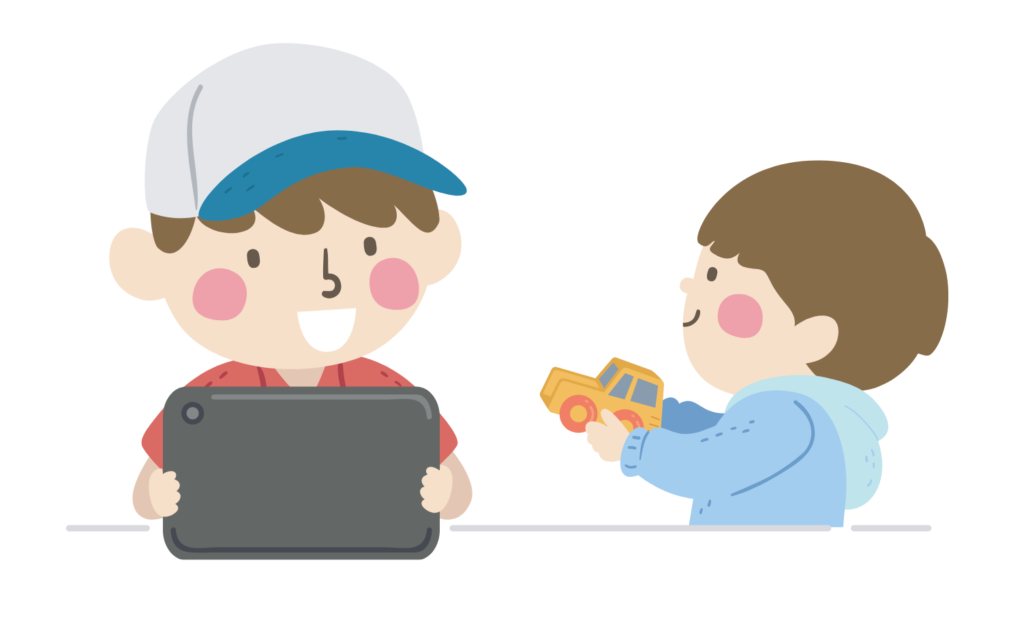Written by Grandview Kids Recreation Therapists, Julia and Alicia
Whether it’s indoors or outside in the sun, the role of a sibling during play is extremely important to your child’s social development. In a time of limited social opportunities, siblings act as social partners and an opportunity for those important reciprocal interactions. Use this resource to find new ways to foster play between siblings at home with the toys and equipment that you may already have. It features helpful tips and activity examples in 4 different categories; turn-taking activities, pretend/imaginative play activities, manipulatives, and active games. The resource offers progressive steps in each category to enhance the social and play skills your child is developing. Sibling play has the ability to not only promote growth in a child’s ability to engage with others outside of the home, but it also enhances the life-long relationship between siblings themselves.

A sibling relationship is one of the first relationships your child will develop across the life-span. Sibling relationships are unique with differing effects on a child’s development and perception of the world. Siblings function as social partners and an opportunity to develop experience with reciprocal interaction, communication, and conflict resolution skills.
McHale, Updegraff & Feinberg, 2017
Tools for Success
- Encourage communication between siblings; have your child prompt their sibling to play: “come play with me”, “your turn”, sign “play”, or point to the activity
- Incorporate different types of activities to hold their interest, and understand when it is time to take a break (short activities, under 5 minutes are a good starting point)
- Provide each sibling with the chance to choose an activity
- Encourage parallel (side by side) play as much as possible to build tolerance of another child in their play area
- Make sure the activity matches the skill level of each participating child (a task that is too easy or too difficult with not be successful)
- Modify materials/set up when required if there is a large gap in abilities or ages (Example: smaller/larger blocks, different options for arts & crafts materials, implementation of movement breaks, etc)
- Celebrate all wins; encourage siblings to provide praise to each other (Example: high fives, or “Good Job”)
- Incorporate your child’s interests in the activities you choose, follow their lead as much as possible
- Choose activities where they work together to achieve a common goal (example: building one block tower vs. building independent towers side by side)
- If helpful, provide a schedule or timer for each set of planned activities
Finding ways for siblings to connect and engage with each other is crucial to the development of an enjoyable play experience and ongoing relationship. This resource will provide activity ideas and tips for facilitating sibling play and the development of this relationship.

Practice Activities
Turn-taking Activities
Step 1: Games requiring a tool e.g. Critter Clinic or anything with a set of keys, Don’t Break the Ice, Cariboo, pin the tail on the donkey, piñata, T-Ball, bowling (one ball), Operation
Step 2: Slot Games or games with multiple pieces. E.g. Kerplunk, Piggy Bank, Pop The Pig, Jenga, crocodile dentist, Sneaky Snacky Squirrel
Step 3: Games with rules or competition e.g., Connect 4, Guess Who, snakes and ladders, Monopoly, battleship, I Spy, Trouble
Pretend/Imaginative Play Activities
Step 1: Toys or Action Figures e.g. Potato Head, cars and trucks, farm animals, sea creatures, Paw Patrol, Barbies/LOL Dolls, superheroes
Step 2: Role-Playing e.g. build a fort and playhouse, doctor/patient, vet clinic, construction site, play-dough restaurant, tea party
Step 3: Games with rules or competition e.g. charades, Pictionary, sculptionary, Cranium, Cadoo

Manipulatives
Step 1: Parallel Play – have both children completing their own activities with their own pot, e.g. beading, play-dough, Mag-formers
Step 2: Associative Play – have each child complete their own activity, but pull from the same pot, for example build LEGO but have all the LEGO in one bucket
Step 3: Cooperative Play – complete an activity together e.g. build one tower together, work on a puzzle together, use a gears board
Active Games
Step 1: Structured games with both children playing actively e.g. obstacle course, dance videos, freeze dance, yoga, scavenger hunt
Step 2: Leader games e.g. Simon Says, follow the leader, Action If, trick shot basketball or bowling (take turns making up trick shots that the other person must complete)
Step 3: Competitive Games e.g. musical chairs, hide/seek, Activity Bingo, tag variation.
Check out more Grandview Kids articles
- “Grandview Kids became my life raft” – International Day for People with Disabilities
- December: Dates of Significance
- From the search for support to finding a village: Celebrating Giving Tuesday
- Scarlett sparkles with hope in every step: Grandview Kids 2025 Holiday Campaign
- Volunteer Spotlight – Heather A.
